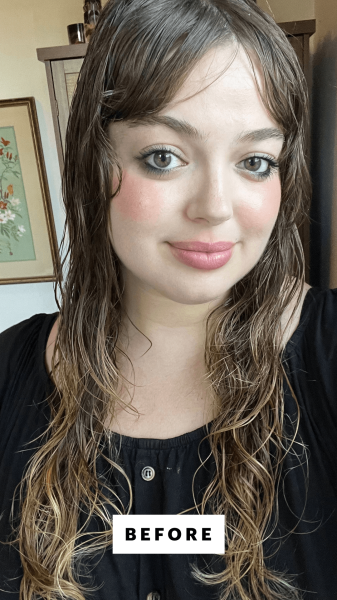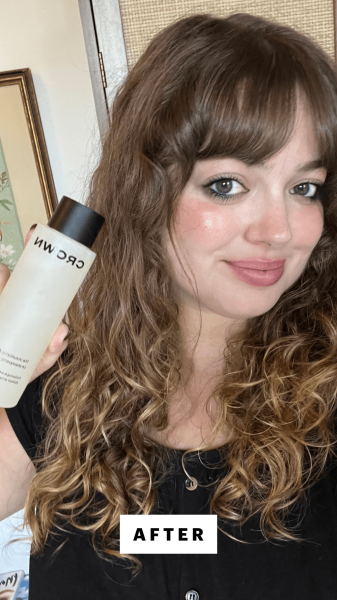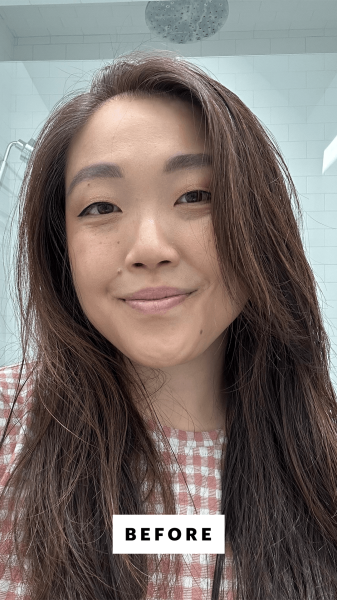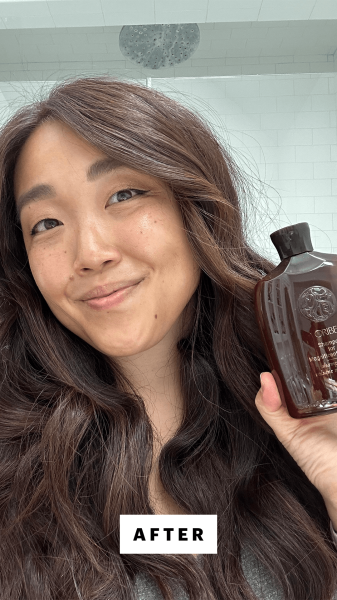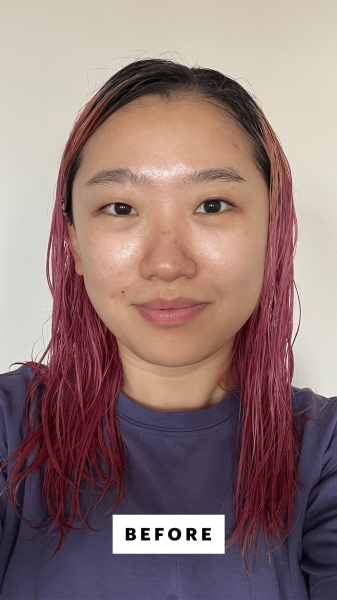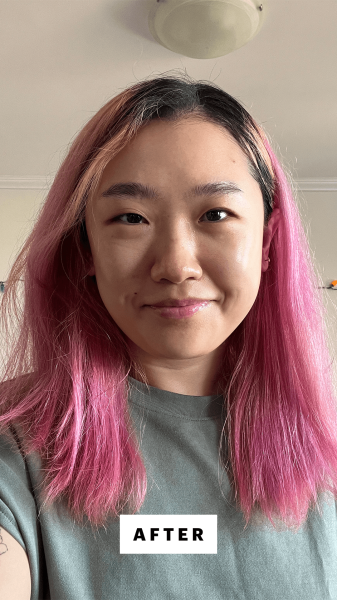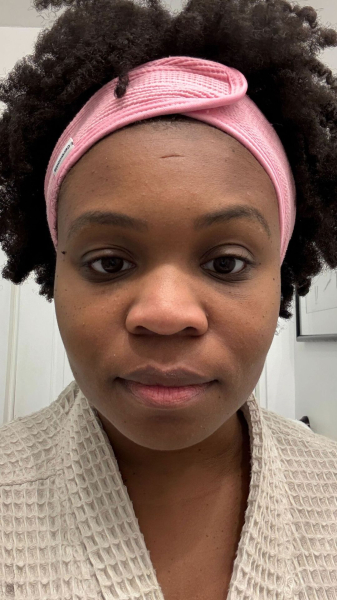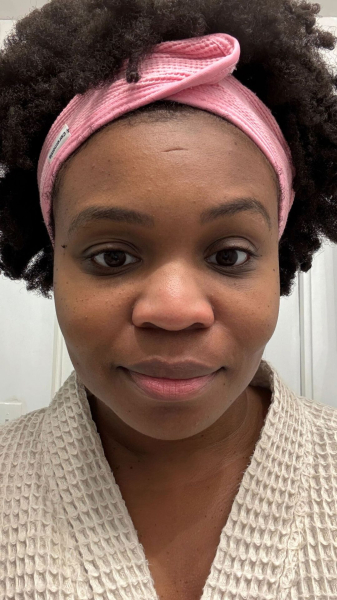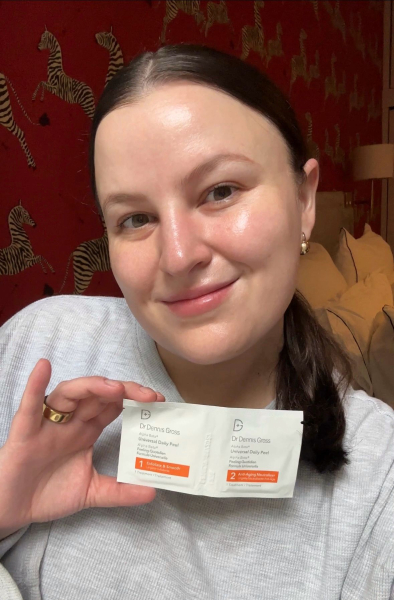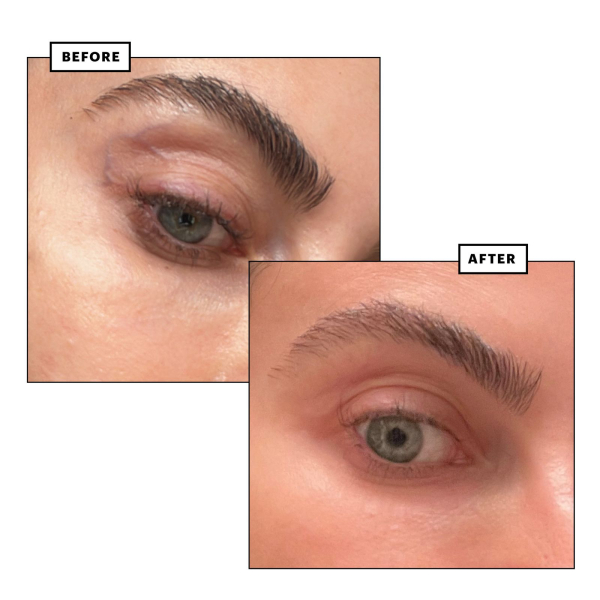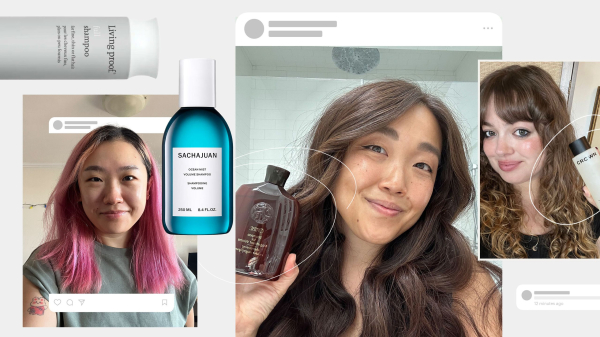
11 Best Volumizing Shampoos for Bouncy Hair That’s Full of Life
 Collage: Gabrielle Langdon; Source images: Courtesy of brandsSave this storySave this story
Collage: Gabrielle Langdon; Source images: Courtesy of brandsSave this storySave this story
All products featured on Allure are independently selected by our editors. However, we may receive compensation from retailers and/or from purchases of products through these links.
Finding the best volumizing shampoo can feel like a Goldilocks mission: too heavy, and you end up with flat, weighed-down hair. Too clarifying? You’ve got a dry scalp to deal with (cue the scalp treatment). Volumizing shampoos, however, can hit that sweet spot, delivering bounce, body, and nourishment without adding time to wash day.
At first glance, volumizing shampoos sound straightforward: “Volumizing shampoos offer the temporary effect of boosting lift and creating more volume,” says Jennifer Nast, a senior stylist at Sharon Dorram at Sally Hershberger Salon in New York City. But there’s actually a whole science behind giving your roots that perfect lift.
It’s not just about making hair look fuller—it’s about striking the right balance in the formula: They need to be lightweight enough to add volume, but also moisturizing enough to keep hair shiny; they should clarify your scalp of buildup, but also leave enough natural oils to maintain a healthy balance. On top of that, they have to avoid a whole host of ingredients like “sulfates and alcohol that can cause dryness and buildup, which make fine hair feel greasy,” according to Fabrice Gili, stylist and founder of Maison 77 in New York City.
Our Top Volumizing Shampoos
- Best Overall: Crown Affair The Volumizing Shampoo, $38
- Best Splurge: Oribe Shampoo for Magnificent Volume, $49
- Best for Color-Treated Hair: Living Proof Full Shampoo, $34
- Best for Textured Hair: Chéribé Hydrating Shampoo, $11
- Best for Thinning Hair: Kérastase Densifique Bain Densité Shampoo, $46
- Best Long-Lasting: Matrix High Amplify Volumizing Shampoo, $21
- Best for Oily Hair: R+Co Ingenious Thickening Shampoo, $49
- Best for Beachy Waves: Sachajuan Ocean Mist Volume Shampoo, $33
- Best for Frizz: Virtue Full Shampoo, $44
- Best for Curls: Davines Volu Shampoo, $37
- Best Scent: Ouai Fine Hair Shampoo, $32
That said, some volumizing formulas do include sulfates—because they’re excellent cleansers and can give that squeaky-clean lift at the roots. For those with very oily scalps or heavy product buildup, sulfates can help remove residue more effectively and prevent hair from falling flat. The trade-off is that they can be too harsh for dry or color-treated hair, which is why finding the right formula for your hair type is key. That makes it hard, but fortunately not impossible. Scroll ahead for our favorites.
Frequently Asked QuestionsLargeChevron
Best Overall: Crown Affair The Volumizing Shampoo
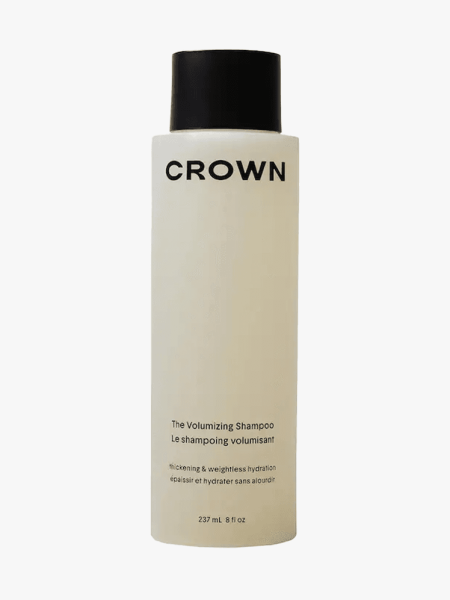
Crown Affair
The Volumizing Shampoo
Sephora
Violet Grey
Why we love it: Pop open Crown Affair’s Volumizing Shampoo and you’re hit with crisp notes of yuzu, green tea, bergamot, and sandalwood—a dreamy scent that’s inspired by the serene bathhouses of ’70s Japan. But it’s more than just a pretty-smelling shampoo: This lightweight gel gently cleanses with coconut-derived surfactants, lifting away buildup without stripping. Rice protein strengthens and plumps fine or flat strands, while tsubaki and meadowfoam seed oils deliver airy hydration that won’t weigh hair down. Color-safe and sulfate-free, it leaves hair soft, full of body, and turns an everyday wash into a mindful ritual.
Allure commerce producer Sarah Hoffman before using the Crown Affair The Volumizing Shampoo
Sarah Hoffmann
Hoffman after using the Crown Affair The Volumizing Shampoo
Sarah Hoffmann
Tester feedback from commerce producer Sarah Hoffmann
LargeChevron
“Crown Affair's shampoos are elite. I love the hydrating formula in the colder months, but during the summer I've been reaching for the volumizing version to tackle the buildup that comes with the near-constant sweatiness that NYC summer causes. I adore how clean my hair feels when I use this shampoo, and I really notice a difference in volume around my scalp and crown (get it?) after washing. My hair just feels springier and more free to curl out, which always makes me happy.” —Sarah Hoffmann, commerce producer
More to know
LargeChevron
- Key ingredients: tsubaki meadows, rice protein, coconut surfactants
- Fragrance-free: no
- Sulfate-free: yes
- Who it’s for: people with flat, limp hair that’s prone to breakage
Best Splurge: Oribe Shampoo for Magnificent Volume
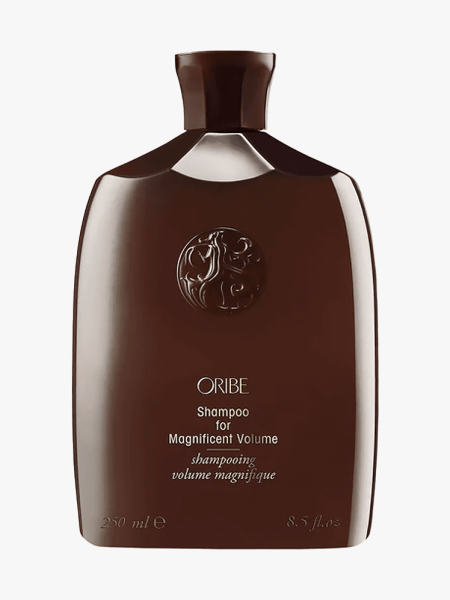
Oribe
Shampoo for Magnificent Volume
Amazon
Nordstrom
Dermstore
Why we love it: If you're dreaming of hair that looks like one of those before-and-after photo moments, you must get your hands on the Oribe Magnificent Volume Shampoo. This Allure editor-favorite brand is all about giving your hair that million-bucks feeling, and this specific formula is next-level. “It uses a polymer blend to plump up the hair shaft for tons of body," Cody Renegar, a hairstylist in Los Angeles, previously shared with Allure. “I also like that it uses coconut and sugar as cleansers and natural exfoliants for the scalp to easily remove buildup without weighing down your hair.” It’s packed with a high-tech polymer blend that gives every strand some serious lift, plus lupine protein and saw palmetto extract to keep your scalp happy and balanced. And we can’t forget about the signature Oribe scent—a woody and floral fragrance inspired by Côte d’Azur—that makes people think you get a salon blowout on the regular.
Allure contributing commerce writer Christa Joanna Lee before using the Oribe Shampoo for Magnificent Volume
Christa Joanna Lee
Lee after using the Oribe Shampoo for Magnificent Volume
Christa Joanna Lee
Tester feedback from contributing commerce writer Christa Joanna Lee
LargeChevron
“If I could have an endless supply of one hair product, this might be it. I have pretty long, thick hair (though it used to be even thicker before I had kids—maybe I’m still chasing that fullness?), and the length makes it feel so weighed down. This shampoo brings the life and bounce back like nothing else.” —Christa Lee, contributing commerce writer
More to know
LargeChevron
- Key ingredients: polymer blend, lupine protein, saw palmetto extract
- Fragrance-free: no
- Sulfate-free: yes
- Who it’s for: people with fine, flat, or dry hair
Best for Color-Treated Hair: Living Proof Full Shampoo
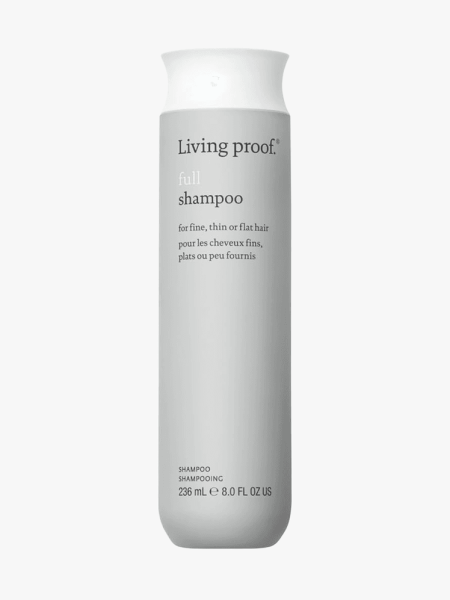
Living Proof
Full Shampoo
Amazon
Nordstrom
Why we love it: We’re pretty obsessed with all things Living Proof, so we’re not shocked that the Full Shampoo has become a permanent part of our shower shelf. "The formula is so gentle,” says Nast. But it still gives your scalp a deep clean with a satisfying lather and effortlessly removes all that styling product buildup we’ve all been guilty of overdoing (oops). The amino acid formula leaves your hair feeling super fresh, doesn’t strip moisture, and gives it major volume, which is the trifecta for fine hair. Part of the secret sauce is amaranth, which plumps up each strand and thickens the fibers, plus phytantriol to preserve color-treated hair and protect it from heat damage.
Allure commerce editor Sarah Han before using the Living Proof Full Shampoo
Sarah Han
Han after using the Living Proof Full Shampoo
Sarah Han
Tester feedback from commerce editor Sarah Han
LargeChevron
“I’m usually not picky with my shampoos, but with my bleached-pink hair, I’ve been zoned in on sulfate-free formulas. My scalp feels so refreshed after using the Full Shampoo and Conditioner duo and my hair feels light-as-air, rather than weighed down, as if there’s still residue or grease I missed. The difference in volume isn’t dramatic (temper your expectations, folks) but I do notice a little zhuzh in that department. As for color, I inevitably lose a little per wash—especially since I double-shampoo—but I make it up with a Korean color-depositing shampoo every other wash to refresh my pink. All in all, I’ll keep on reaching for Full as long as my hair is colored—and maybe then some.” —Sarah Han, commerce editor
More to know
LargeChevron
- Key ingredients: peptides, phytantriol, amino acids
- Fragrance-free: no
- Sulfate-free: yes
- Who it’s for: people with fine, flat hair that’s color-treated
Best for Textured Hair: Chéribé Hydrating Shampoo
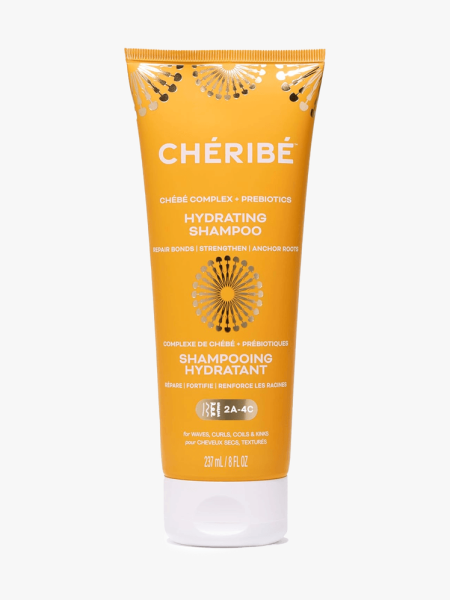
Chéribé
Hydrating Shampoo
Amazon
Why we love it: There’s nothing like a lack of moisture to zap the volume right out of curls and coils. “Textured hair looking for volume often needs hydration first, and Chéribé Hydrating Shampoo delivers on both fronts,” says Annagjid “Kee” Taylor, a stylist based in Philadelphia. At the core of every Chéribé product is the Chébé Complex, a concentrated extract of heirloom chébé seeds grown on the founder’s family farm in Chad, Africa. “This complex works to strengthen, condition, and reduce breakage. It also has prebiotics that support a healthy scalp—the foundation for fuller, more voluminous styles. It’s a good choice for curls, coils, and waves that need bounce without frizz,” she says.
Editor's tip
LargeChevron
Pro-vitamin B5 and sunflower seed oil add lightweight moisture and shine, smoothing the cuticle so curls hold their shape and volume instead of falling flat. If you’re the type who likes to wash your hair daily, it hydrates without weighing hair down.
More to know
LargeChevron
- Key ingredients: prebiotics, chébé seed extract, pro-vitamin B5, sunflower seed oil
- Fragrance-free: no
- Sulfate-free: yes
- Who it’s for: people with textured or curly hair
Best for Thinning Hair: Kérastase Densifique Bain Densité Shampoo
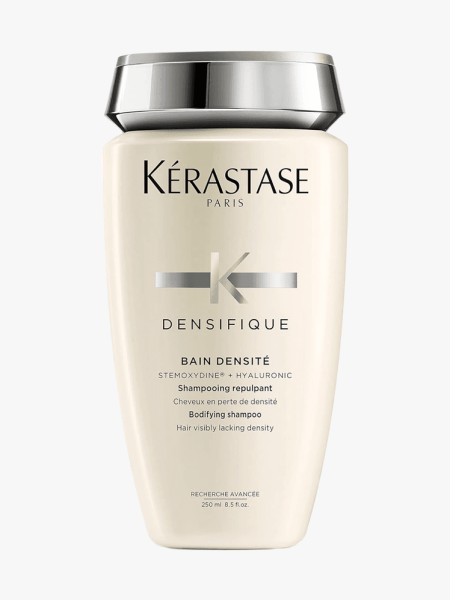
Kérastase
Densifique Bain Densité Shampoo
Amazon
Sephora
Why we love it: Whether your hair’s thinning from stress, aging, or it’s just how your hair naturally is (sigh), the right shampoo can help boost volume and strengthen strands. Kérastase Densifique Densité Shampoo contains ceramides and hyaluronic acid (yep, just like in your skin care) to plump and hydrate hair, giving it a fuller look. Another hero ingredient is Intra-cylane, a molecule that fills in surface gaps to thicken each hair follicle from the inside out. Just like you’d double cleanse your face, “you can repeat your lather a second time for maximum results,” says Raven Hurtado, Chicago-based stylist at Maxine Salon. The experience of the lather is pure luxury: It quickly foams up while coating every strand with a rich, silky feel.
More to know
LargeChevron
- Key ingredients: hyaluronic acid, intra-cylane, ceramides
- Fragrance-free: no
- Sulfate-free: no (contains sodium laureth sulfate)
- Who it’s for: people with fine, thinning hair or scalp buildup
Best Long-Lasting: Matrix High Amplify Volumizing Shampoo
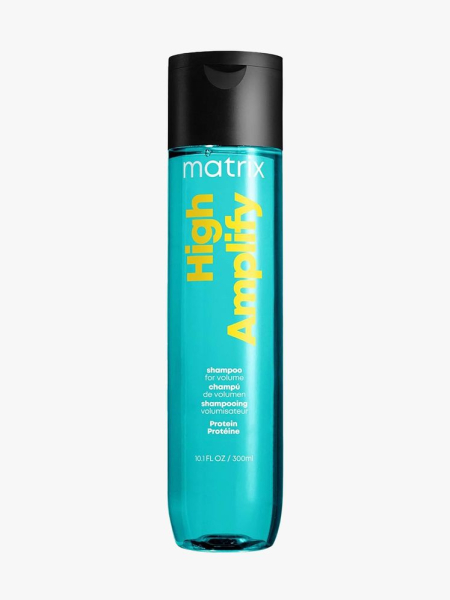
Matrix
High Amplify Volumizing Shampoo
Amazon
Ulta Beauty
Why we love it: It’s one thing to get that big, bouncy lift right after blow-drying, but making it last all day? That’s where Matrix High Amplify Volumizing Shampoo shines. “For medium to fine hair that tends to fall flat, this formula helps build lift that lasts,” says Taylor. Moisture-locking panthenol cleanses without stripping your strands, plus “wheat proteins to strengthen and add structure, which helps hair maintain volume throughout the day,” she says. And because it skips heavy ingredients like silicones and heavy oils, it leaves hair smooth, touchable, and full of movement.
Editor's tip
LargeChevron
Yes, this shampoo contains sulfates, but depending on your hair type and concerns, that can actually be a plus if you have fine or flat hair that tends to lose volume quickly. Sulfates like sodium laureth sulfate help clear away oil and buildup, leaving a super-clean slate that allows roots to lift.
More to know
LargeChevron
- Key ingredients: hydrolyzed wheat protein, pro-vitamin B5
- Fragrance-free: no
- Sulfate-free: no (contains sodium laureth sulfate)
- Who it’s for: people with fine to medium hair types who want lasting volume
Best for Oily Hair: R+Co Ingenious Thickening Shampoo
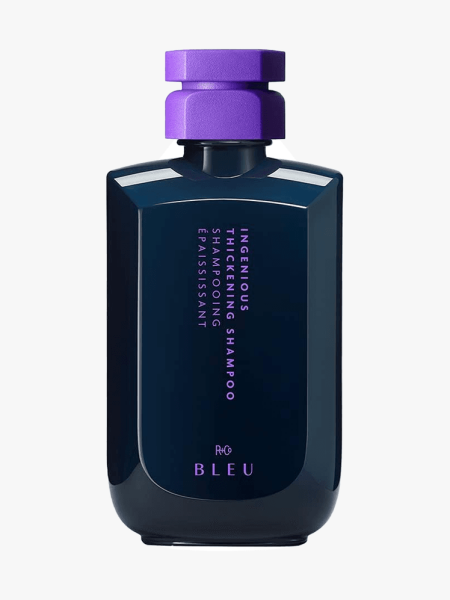
R+Co
Ingenious Thickening Shampoo
Amazon
Dermstore
Why we love it: Unlike your average shampoo, R+Co Bleu formulas are built like treatments as they’re packed with ingredients that go beyond just removing oil and buildup. Ingenious Thickening Shampoo uses the line’s proprietary Bleu Molecule Complex to strengthen and boost shine while cleansing. Vegetable protein helps reinforce limp strands so they look thicker and fuller, and kelp extract fortifies fine hair for long-lasting lift. The payoff: “It smells amazing and leaves the hair feeling clean, bouncy, and touchable,” says Adam Campbell, a hairstylist in Los Angeles.
Editor's tip
LargeChevron
Despite its big lather, it’s actually sulfate-free. Instead of harsh SLS or SLES, it uses gentler coconut-derived cleansers (like sodium lauroyl methyl isethionate) that lift oil and buildup without stripping.
More to know
LargeChevron
- Key ingredients: Bleu Molecule Complex, vegetable protein, kelp extract
- Fragrance-free: no
- Sulfate-free: yes
- Who it’s for: people with fine or limp hair
Best for Beachy Waves: Sachajuan Ocean Mist Volume Shampoo
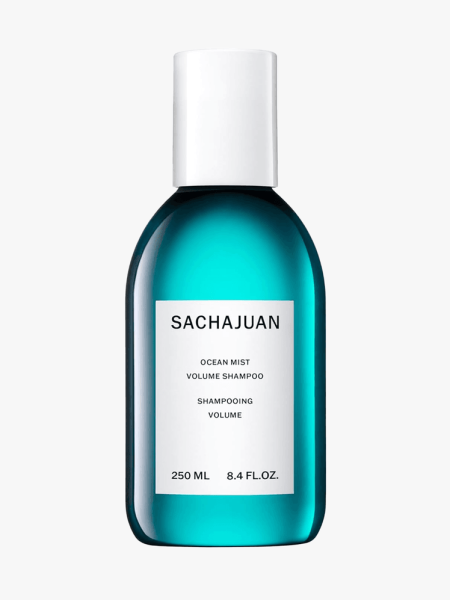
Sachajuan
Ocean Mist Volume Shampoo
Amazon
Dermstore
Why we love it: You always hear about “just-back-from-the-beach” hair, but while those effortless waves are gorgeous, the reality is usually sunscreen residue, sweat, and a little sand clinging to your scalp. Sachajuan Ocean Mist Volume Shampoo gives you everything you love about beachy texture without any of the grit. Formulated with the brand’s signature Ocean Silk Technology (a blend of marine algae extracts), it gently cleanses while adding soft, tousled volume and airy lift. “It’s light, fresh, and great for fine or flat hair that needs a little texture and the bounciest movement,” says Campbell.
Editor's tip
LargeChevron
It has a fresh, ocean-inspired scent that will take you back to the beach—even in your shower.
More to know
LargeChevron
- Key ingredients: hydrolyzed wheat protein, red algae, glycerin
- Fragrance-free: no
- Sulfate-free: no (contains sodium laureth sulfate)
- Who it’s for: people who want slight texture
Best for Frizz: Virtue Full Shampoo
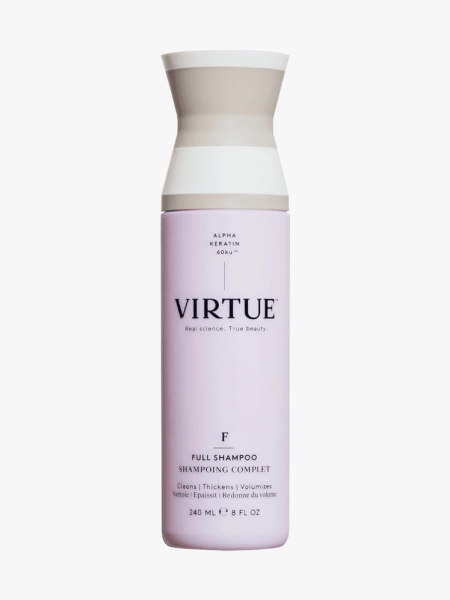
Virtue
Full Shampoo
Amazon
Nordstrom
Dermstore
Why we love it: Flat at the roots but frizzing out everywhere else? Virtue Full Shampoo handles both at once. This Allure Best of Beauty Award winner not only gives fine, limp strands a little lift, but it also helps smooth and strengthen them over time. “It’s one of my favorites because it’s so lightweight yet really improves the health of your hair,” says Nast. Artichoke leaf extract, loaded with lipids and proteins to seal in nutrients and fortify hair, plus soybean-derived phospholipids that block humidity so your shine lasts and keeps frizz in check.
Editor's tip
LargeChevron
“A common mistake people make is not fully rinsing out the shampoo from their scalp, which could weigh hair down,” says Gili.
More to know
LargeChevron
- Key ingredients: phospholipids, pink pomelo, artichoke leaf
- Fragrance-free: no
- Sulfate-free: yes
- Who it’s for: people with fine, flat hair that breaks easily
Best for Curls: Davines Volu Shampoo
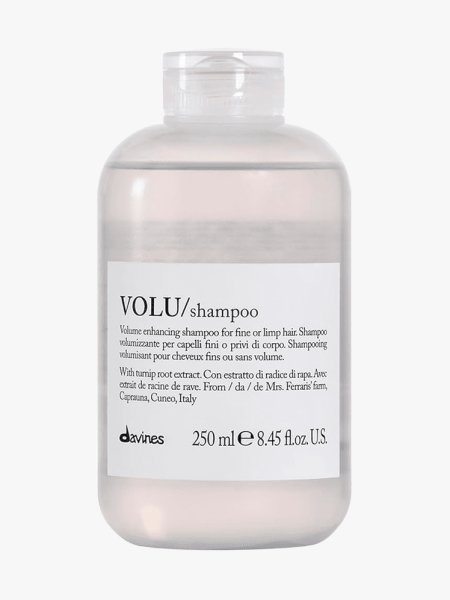
Davines
Volu Shampoo
Amazon
Nordstrom
Why we love it: One of Gili’s top picks for fine-haired clients is the Davines Volu Shampoo. “Sulfate-free shampoos like this one are perfect for those dealing with breakage, and it’s super moisturizing without weighing down fine hair,” Gili explains. The star ingredient is Italian turnip extract, which helps lift hair from the roots for that enviable volume. “Caprauna turnip extract adds even more body and volume with many added vitamins such as A, B, and C, maintaining the health of the hair,” he says. It also contains humectants that help retain moisture, which is especially important for fine hair that tends to get brittle.
Editor's tip
LargeChevron
To give your roots maximum lift, "volumizing shampoo works best when hair is gently towel-dried and then blow-dried for full effect," says Gili. The heat helps activate the volumizing ingredients, giving you that extra height and bounce you're after.
More to know
LargeChevron
- Key ingredients: turnip extract, pro-vitamin B5, sodium PCA
- Fragrance-free: no
- Sulfate-free: yes
- Who it’s for: people with fine waves or curls
Best Scent: Ouai Fine Hair Shampoo
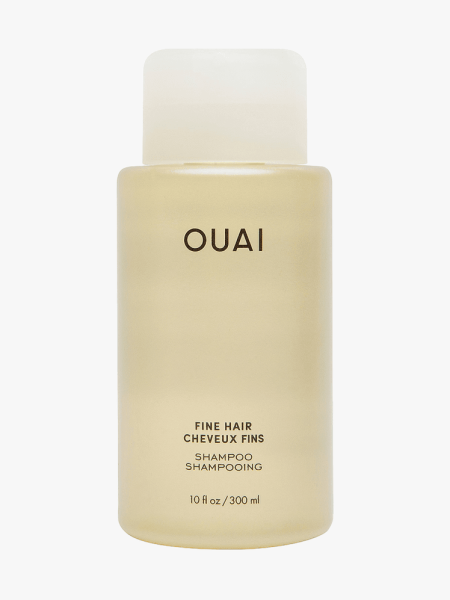
Ouai
Fine Hair Shampoo
Amazon
Ulta Beauty
Revolve
Why we love it: Ouai Fine Hair Shampoo transforms your hair from flat and limp to full-on bouncy. No surprise there—after all, founder Jen Atkin has styled practically every A-lister with to-die-for volume. Packed with biotin and keratin to strengthen and chia seed oil to keep hair ridiculously soft, this shampoo is the real deal and is safe for color-treated hair. “This shampoo strengthens hair, reduces frizz, and adds body,” Cardenas previously shared with Allure. “Plus, it has the most beautiful citrusy scent—think Italian lemon, orange, and jasmine."
Editor's tip
LargeChevron
When following with volumizing conditioner, “avoid applying it to your roots as this will weigh down your hair and make it flat,” says Nast.
More to know
LargeChevron
- Key ingredients: biotin, chia seed oil, hydrolyzed keratin
- Fragrance-free: no
- Sulfate-free: yes
- Who it’s for: people with fine or thinning hair
Frequently Asked Questions
Do volumizing shampoos really work?
Yes, volumizing shampoos can definitely help boost your hair’s volume, but it depends on the formula, your hair type, and your lifestyle. They’re designed to cleanse without weighing your hair down, using ingredients like polymers to make strands look thicker and proteins to add some strength. “Unfortunately, there are no long-term benefits for volumizing shampoo, being that each scalp is different," says Gili. “However, the product can create ‘memory’ that can help the body of the hair to last a certain amount of time.”
They might not be a total game-changer for super-fine hair, but you’ll notice more lift, especially if you blow-dry afterward. Just don’t forget to follow up with a lightweight conditioner to keep your hair soft without losing that extra bounce.
What is the best product for volumizing hair?
When it comes to boosting volume, several hairstyling products can give your hair that extra lift after you’re done in the shower. Volumizing mousses are a great starting point “as lightweight polymers coat the hair, expanding each strand and providing lift from the roots,” says Nast.
Root lifting sprays are another go-to, especially for the crown of your head. “They normally have lightweight polymers to give a strong hold at the roots,” she says. For a more textured, tousled vibe, try a texture spray. “They will add grit to your hair by adding friction between hair strands, which helps create the illusion of thicker hair,” says Nast.
How can I make fine, thin hair look thicker?
If you want to give fine hair a thicker, fuller look, start with a good volumizing shampoo and conditioner to add body without making your hair feel heavy. “Volumizing shampoos work by removing oil and buildup that weigh hair down,” explains Nast. "They often contain proteins to plump the hair and polymers that coat each strand for extra thickness." Blow-drying with a round brush is a game-changer for lifting roots, especially if you add a volumizing mousse or spray beforehand.
Dry shampoo is also your secret weapon for adding a quick blast of texture and volume to your roots. But “avoid using too much product as this can actually have the opposite effect and weigh your hair down,” says Nast. A layered haircut can create the illusion of fuller hair, and using thickening or texturizing sprays will help give it that plumped-up look. For instant thickness, clip-in extensions are always an option, and don’t forget to keep your scalp healthy for better hair growth.
Is volumizing shampoo bad for hair?
Volumizing shampoo isn’t necessarily “bad” for your hair, but how you use it matters. These formulas can be great for adding body and texture, especially for fine or flat hair, but they can also lead to buildup and dryness. “Most volumizing shampoos build up in the hair over time,” says Matt Rez, a colorist based in Los Angeles. “Although the goal is to thicken each strand at the root, hair may initially feel thicker to the touch, but with repeated use, buildup can weigh it down—leading to less volume in the long run.” This happens because those thickening ingredients aren’t just staying at your roots—they trickle down the length of your hair as you rinse. Instead of keeping your hair light and voluminous, they can weigh it down, making it feel flat and heavy instead of full and bouncy.
Volumizing shampoos might also be drying, especially if they contain sulfates, which strip natural oils from the hair and scalp. “To mitigate these effects, opt for sulfate-free shampoos with added moisturizing ingredients like argan oil, jojoba oil, or green tea extract,” says Guillaume Boucher, a stylist at Jenna Perry Hair Studio in New York City. Additionally, while volumizing shampoos work well for fine or limp hair, they may not be the best choice for curly, coarse, or dry hair, which typically requires more moisture.
The key to using volumizing shampoo effectively is moderation. “Used occasionally, volumizing shampoos may help with volume—but overuse will cause a problem,” says Rez. To prevent buildup, incorporate a clarifying shampoo every one or two weeks (or more, depending on how often you use styling products) to remove residue. Ultimately, volumizing shampoos can be helpful, but balancing them with clarifying washes and lightweight, sulfate-free options will keep your hair full, fresh, and healthy in the long run.
Meet the experts
- Guillaume Boucher, a stylist at Jenna Perry Hair Studio in New York City
- Adam Campbell, a hairstylist in Los Angeles
- Jae Manuel Cardenas, a senior stylist at Sally Hershberger NoMad in New York City
- Fabrice Gili, stylist, founder, and owner of Maison 77 in New York City
- Raven Hurtado, a stylist at Maxine Salon, based in Chicago
- Jennifer Nast, a senior stylist at Sharon Dorram at Sally Hershberger Salon in New York City
- Cody Renegar, a hairstylist in Los Angeles
- Matt Rez, a colorist based in Los Angeles
- Annagjid “Kee” Taylor, a stylist and founder of Deeper Than Hair Salon, based in Philadelphia
How we test and review products
We always enlist a range of testers for our makeup vertical, but hair-care products and tools are another story. While there are certainly products that can be used across different hair textures, lengths, curl patterns, thicknesses, colors (natural and unnatural), and needs, hair products are often created with specific consumers in mind. Many are created in order to address a concern (dandruff, breakage, brittleness) or to work most effectively for a specific hair type (4C curls, wavy hair, gray hair). You wouldn't want to pick up a purple shampoo that's only been reviewed by someone with, say, auburn hair, or a diffuser that's never been tested by anyone with curls—right?
Most Popular
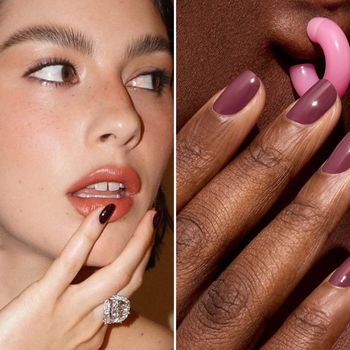 NailsThe 6 Fall Nail Color Trends You Need to Know About
NailsThe 6 Fall Nail Color Trends You Need to Know About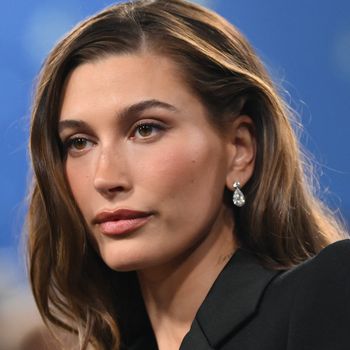 NailsHailey Bieber's New Faded French Manicure Is Destined to Be a Huge Trend
NailsHailey Bieber's New Faded French Manicure Is Destined to Be a Huge Trend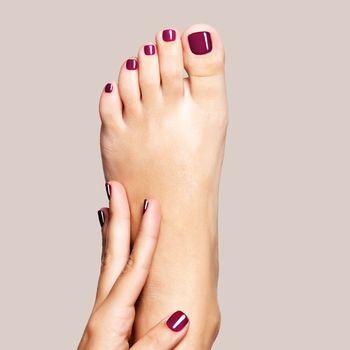 Nails9 Cozy Fall Pedicure Colors to Wiggle Your Toes In
Nails9 Cozy Fall Pedicure Colors to Wiggle Your Toes In
For our review of the best volumizing shampoos, we enlisted the help of multiple editors, writers, contributors, and hair stylists—many of who want thicker, fuller-looking har. Testers considered performance across four primary categories: efficacy, texture and experience, fragrance, and packaging. For more on what's involved in our reporting, check out our complete reviews process and methodology page.
Our staff and testers
A beauty product is a personal purchase. You might be searching for a face cream to address persistent dryness or a new nail product to add to your Sunday self-care routine; you may simply be browsing around for the latest launches to hit the hair market. No matter what you seek or your individual needs and concerns, Allure wants to ensure that you love anything we recommend in our stories. We believe that having a diverse team of writers and editors—in addition to the wide range of outside testers and industry experts we regularly call upon—is essential to reaching that goal.
After all, can we really say a skin-care product is the “best” for people over 50 if the only testers we’ve solicited opinions from folks who have yet to hit 30? Can we honestly deem a high-end diffuser worthy of your hard-earned cash if it’s never been tested on curls? We’re proud that our staff spans a wide range of ages, skin tones, hair textures, genders, and backgrounds, which means that we are able to fairly assess any beauty product that comes into the beauty closet.
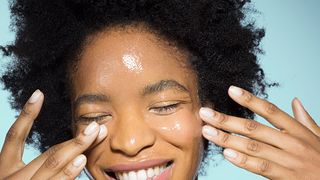
9 Best Chemical Peels to Use at Home for Soft, Glowing Skin

Source image: Jonathan Knowles/Getty Images
Save this storySave this story
All products featured on Allure are independently selected by our editors. However, we may receive compensation from retailers and/or from purchases of products through these links.
When it comes to the best chemical peels for at-home use, today’s options make it easier than ever to achieve smoother, more radiant skin that rivals the glow of an in-office peel. “The benefits [of over-the-counter peels] can include dark spot fading, evening complexion, collagen building, natural tone-enhancing, and exfoliating,” says Mona Gohara, MD, a board-certified dermatologist based in Hamden, Connecticut. That’s why many dermatologists recommend at-home peels between professional treatments like microneedling, lasers, or extractions—they help extend those results by further exfoliating, brightening, and fading lingering discoloration while smoothing skin.
As for how chemical peels work, it’s somewhat similar to a toner. "Exfoliating enzymes in chemical peels work by gently removing the dead layer of the skin—a.k.a. the stratum corneum—to brighten and smooth the skin," says David Kim, MD, a New York City-based board-certified dermatologist. Even though today’s at-home peels are gentler, it’s best to steer clear of so-called “professional-grade” formulas sold online, through third-party sites, or from unverified brands. “I’ve treated patients with burns, scarring, and deep hyperpigmentation after trying those at home, especially in deeper skin tones, which are more prone to discoloration if the peel penetrates too many layers of skin,” says Heather Woolery-Lloyd, MD, a board-certified dermatologist, based in Miami.
Stick to chemical peels marketed specifically for home use, follow directions to the letter, and always pair with SPF. Ahead, we’ve enlisted the help of derms to round up the best at-home chemical peels that deliver real results.
Our Top Chemical Peels
- Best Overall: Shani Darden Triple Acid Signature Peel, $125
- Best for Beginners: Dermalogica Liquid Peelfoliant, $69
- Best Peel Pads: Dr. Dennis Gross Skincare Alpha Beta Extra Strength Daily Peel Pads, $153 (60-count)
- Best for Acne-Prone Skin: Obagi Blue Brilliance Triple Acid Peel, $149
- Best Overnight Peel: Kate Somerville KateCeuticals Resurfacing Overnight Peel, $109
- Best for Uneven Texture: Elemis Dynamic Resurfacing Peel & Reset, $122
- Best for Sensitive Skin: U Beauty Resurfacing Flash Peel, $188
- Best Luxury: Chanel Le Lift Pro Retexturizing AHA Peel, $220
- Best Budget: The Ordinary AHA 30% + BHA 2% Peeling Solution, $10
Frequently Asked QuestionsLargeChevron
Best Overall: Shani Darden Triple Acid Signature Peel
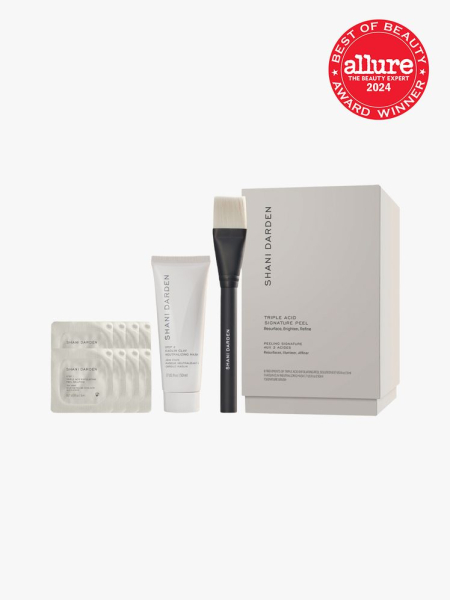
Shani Darden
Triple Acid Signature Peel
Amazon
Revolve
Violet Grey
Allure editor-in-chief Jessica Cruel applying the Shani Darden Triple Acid Signature Peel
Jessica Cruel
Why It's Worth It: For those already well-versed in at-home treatments, Shani Darden’s Triple Acid Signature Peel is basically a pro facial in a box—and that’s exactly why it earned a 2023 Best of Beauty Award. The triple acid complex (glycolic, lactic, and mandelic acids) teams up with detoxifying kaolin and bentonite clay, plus soothing fruit and veggie extracts, to target fine lines, discoloration, and other visible signs of aging. Because this is a powerful peel, it’s crucial to follow the directions exactly as instructed. Start by applying the Triple Acid Solution Peel for one minute (or up to two if your skin isn’t sensitive and can handle it). Next, layer the Neutralizing Clay Mask directly over the peel for 10 minutes. While the peel gets to work, the mask steps in to calm any tingling or discomfort.
Cruel before applying the Shani Darden Triple Acid Signature Peel
Jessica Cruel
Cruel after applying the Shani Darden Triple Acid Signature Peel
Jessica Cruel
Tester feedback from editor-in-chief Jessica Cruel
LargeChevron
“When I have to be on TV or walk the red carpet, there is only one product I trust to leave my skin glowing, and that's this peel. I have been lucky enough to get the full celeb facial treatment at Shani Darden's LA studio. This two-step exfoliant bottles a little of that magic up for at-home use. I love that it comes with a brush to apply the acid step. Then, you slather on the clay mask, which gives the whole thing a whipped consistency. It tingles a bit, but after I rinse, my skin is visibly glowier.” —Jessica Cruel, editor-in-chief
More to know
LargeChevron
- Key ingredients: glycolic acid, lactic acid, mandelic acid, kaolin clay, bentonite clay, cucumber extract
- Who it’s for: people with a normal, oily, acne-prone, or mature skin type
- Fragrance-free: yes
Best for Beginners: Dermalogica Liquid Peelfoliant
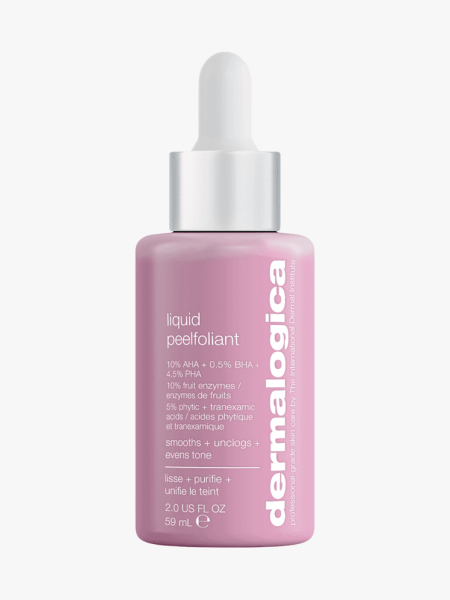
Dermalogica
Liquid Peelfoliant
Amazon
Nordstrom
Ulta Beauty
Allure commerce editor Sarah Han applying Dermalogica’s Liquid Peelfoliant
Sarah Han
Why it’s worth it: Dermalogica’s Liquid Peelfoliant is a professional-strength resurfacing treatment you can work into even the busiest routine. In under three minutes, a 30% multi-acid blend—glycolic, lactic, salicylic, phytic, and tranexamic acids—plus fruit enzymes smooth rough texture and brighten uneven skin tone. “This at-home peel helps with mild acne and is great for those looking to reduce the appearance of fine lines and wrinkles,” Ruth McTighe, MD, a board-certified dermatologist based in Mt. Pleasant, SC. While at-home peels can feel intimidating for beginners, “Patients love that the dropper makes it easy to apply just the right amount and usually involves little to no downtime,” she says.
Tester feedback from commerce editor Sarah Han
LargeChevron
“I’m very hesitant when it comes to chemical peels—especially when there’s a 30% acid blend label staring right at me—so you can imagine my surprise when I didn’t feel my face tingle or burn at all as I worked Dermalogica’s Liquid Peelfoliant into my skin. (I used it multiple times to make sure I wasn’t dreaming.) Of course, non-irritating is great and all (and the bare minimum, tbh), but what about the results? I didn’t do this on purpose, but after a busy day out, I may have skipped washing my face…and let’s just say a very thorough double cleanse and this peel seriously helped revive my skin. I looked dewy as heck, and my pores were singing their praises—though, if they could talk, I’m sure they would’ve yelled at me to not go to bed wearing makeup. I’ve been searching for an exfoliating treatment to use consistently (weekly), and by all means, I think this is it!” —Sarah Han, commerce editor
More to know
LargeChevron
- Key ingredients: phytic acid, fruit enzymes, tranexamic acid, glycolic acid, lactic acid, salicylic acid, gluconolactone
- Who it’s for: people with fine lines or wrinkles, dull skin, or large pores
- Fragrance-free:
Best Peel Pads: Dr. Dennis Gross Skincare Alpha Beta Extra Strength Daily Peel Pads
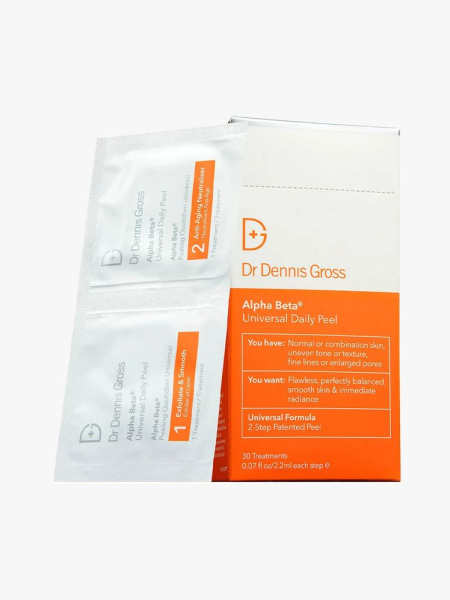
Dr. Dennis Gross
Alpha Beta Extra Strength Daily Peel Pads
Amazon (60-Count)
Nordstrom (60-Count)
Dermstore (60-Count)
Allure features director Dianna Singh after using the Dr. Dennis Gross Skincare Alpha Beta Extra Strength Daily Peel Pads
Dianna Singh
Why it’s worth it: We’ll take our glow to go, please. Ideal for tossing in your carry-on or keeping on your nightstand, Dr. Dennis Gross Alpha Beta Extra Strength Daily Peel Pads make pro-level exfoliation as simple as swipe, wait, repeat. “These come in easy-to-use facial pads with a two-step system that combines AHAs, BHAs, retinol, and antioxidants,” says Dr. McTighe. Let's break it down. Step one is all about exfoliation: Seven acids (including glycolic, lactic, and salicylic) sweep away dead skin cells, refine tone, and smooth lines, while chamomile and green tea help calm and protect. Step two shifts the focus to repair and renewal, layering in retinol to boost elasticity, adenosine to soften wrinkles, and antioxidants like resveratrol and green tea to defend against free radical damage. “It's a tried-and-true product that works especially well for people with oily skin or those prone to breakouts," adds Dr. Woolery-Lloyd.
Tester feedback from Allure features director Dianna Singh
LargeChevron
"What may look like a makeup remover wipe at first glance is actually a pad packed with chemical exfoliators that help brighten instantly and improve discoloration over time. I first discovered these back when I was a beauty assistant (so, longer ago than I'd like to admit), and yet somehow I'm still pleasantly surprised by the next-day glow I get from using one of these at night." —Dianna Singh, features director
More to know
LargeChevron
- Key ingredients: step 1 includes salicylic acid, glycolic acid, lactic acid, and chamomile; step 2 includes retinol, resveratrol, green tea extract, and adenosine
- Who it’s for: everyone, especially those with fine lines and wrinkles
- Fragrance-free: no
Best Overnight Peel: Kate Somerville KateCeuticals Resurfacing Overnight Peel
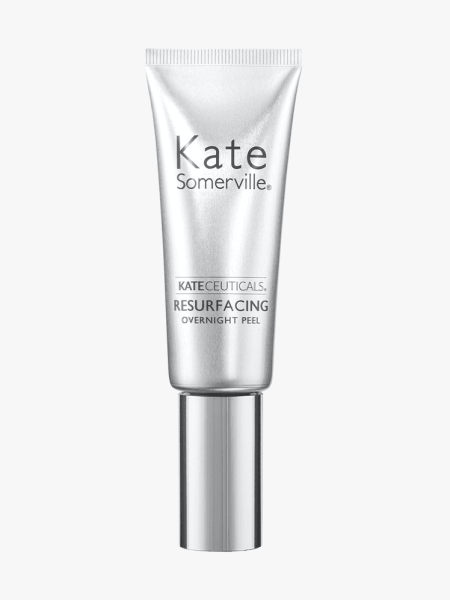
Kate Somerville
Kateceuticals Resurfacing Overnight Peel
Amazon
Nordstrom
Dermstore
Why it’s worth it: Some of the best glows happen when your skin-care products get extra time to sink in. Designed to work overnight, “a unique feature of the KateCeuticals Resurfacing Overnight Peel is the use of encapsulated retinol with a ceramide complex, which improves tolerability and reduces irritation,” says Brendan Camp, MD, a board-certified dermatologist based in New York City. That means you reap all the line-smoothing, radiance-boosting benefits of retinol while you sleep without the typical dryness. “Just be sure to skip other retinoids that evening to avoid overdoing it,” says Dr. Camp.
More to know
LargeChevron
- Key ingredients: niacinamide, glycolic acid, retinol, ceramides
- Who it’s for: people with dull or dry skin
- Fragrance-free: no
Best for Acne-Prone Skin: Obagi Blue Brilliance Triple Acid Peel
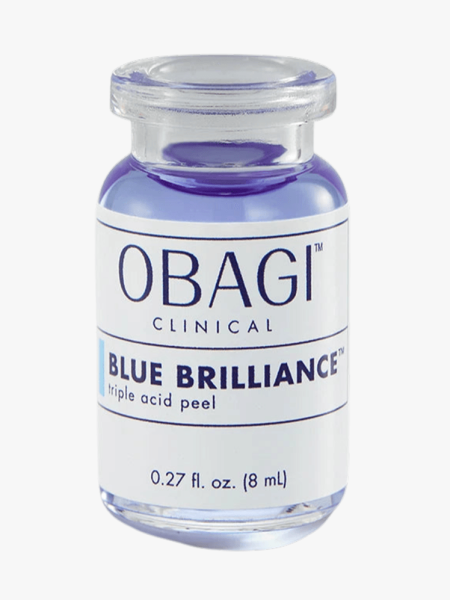
Obagi
Blue Brilliance Triple Acid Peel
Obagi
Why it’s worth it: Chemical peels usually mean trade-offs: brighter skin now, irritation later. The Obagi Blue Brilliance Triple Acid Peel flips that expectation with a science-backed formula without the harsh downtime. Glycolic, lactic, and salicylic acids work on multiple levels to smooth rough texture, unclog pores, and even out tone for an instant glow. But what makes it unique is the balance: soothing licorice root, calming willow bark, and hydrating humectants help keep skin comfortable while the acids do their work.
More to know
LargeChevron
- Key ingredients: salicylic acid, glycolic acid, lactic acid, licorice root, witch hazel, willow bark
- Who it’s for: anyone with uneven texture, hyperpigmentation, acne, or dry skin
- Fragrance-free: no
Best for Uneven Texture: Elemis Dynamic Resurfacing Peel & Reset
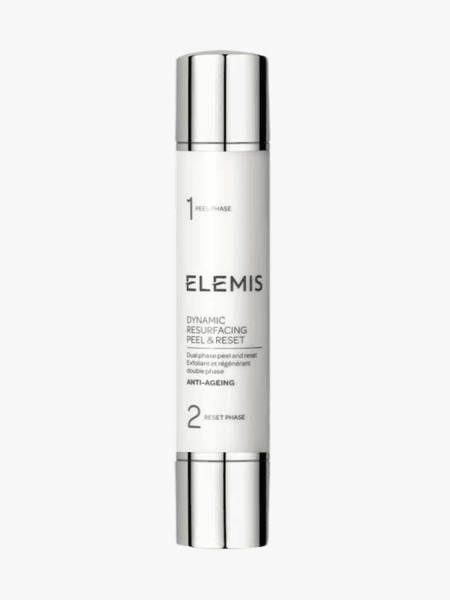
Elemis
Dynamic Resurfacing Peel & Reset
Amazon
Nordstrom
Why it’s worth it: The Elemis Dynamic Resurfacing Peel & Reset comes in a clever double-ended package—one side to peel, the other to reset—making glow-inducing results surprisingly easy at home. Formulated for twice-weekly use, it tackles discoloration, visible pores, and age spots all in one routine. Step one resurfaces with a patented trio of enzymes (papain, protease, and subtilisin) plus phytic, ellagic, and mandelic acids to boost luminosity and refine skin’s texture. “The second step soothes post-peel skin with deep hydration and includes birch juice and lactococcus ferment lysate to rebalance skin,” says Dr. Camp. You’re basically getting two powerful treatments in one.
Editor's tip
LargeChevron
Mandelic acid might not get as much hype as glycolic or lactic acid, but it deserves a spot on your radar, especially if your skin leans sensitive. Thanks to its larger molecule size, it penetrates more slowly, which makes it gentler and less irritating while still boosting cell turnover.
More to know
LargeChevron
- Key ingredients: phase 1 includes papain, protease, subtilisin, phytic acid, ellagic acid, and mandelic acid; phase 2 includes glycerin, birch juice, and Lactococcus ferment lysate
- Who it’s for: people with dullness, uneven texture, or clogged pores
- Fragrance-free: no
Best for Sensitive Skin: U Beauty Resurfacing Flash Peel
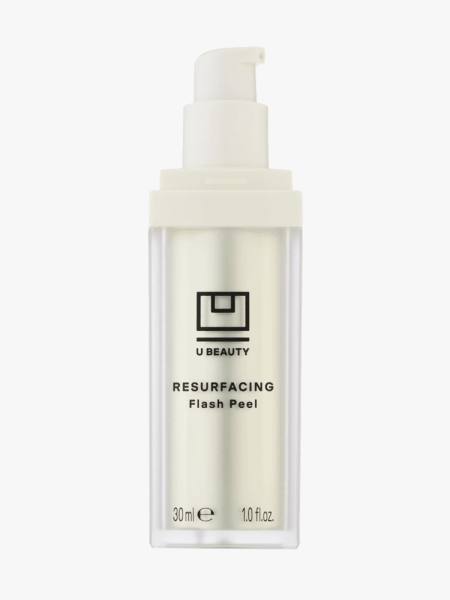
U Beauty
Resurfacing Flash Peel
Amazon
Nordstrom
Revolve
Why it’s worth it: Although the U Beauty Resurfacing Flash Peel is designed to be used in a—well—flash, the payoff goes way beyond a quick glow. “This weekly treatment offers rapid results to exfoliate, brighten, and renew dull-looking skin, but it also tackles uneven tone, clogged pores, and rough texture over time,” says Dr. Camp. Unlike traditional peels that drench the skin with actives all at once, the brand’s proprietary Siren capsules deliver exfoliating acids directly to damaged skin, bypassing healthy areas for maximum results with minimal irritation. Glycolic acid and fruit-derived AHAs gently buff away dead cells, while hyaluronic acid and polyunsaturated essential fatty acids restore hydration and cushion the barrier. You get both instant radiance and healthier, smoother skin the more you use it.
Editor's tip
LargeChevron
Follow with a nourishing moisturizer to lock in hydration. The formula already includes hyaluronic acid and essential fatty acids, but an extra layer helps dry or sensitive skin wake up even calmer and glowier.
More to know
LargeChevron
- Key ingredients: glycolic acid, aloe vera, betaine, hyaluronic acid, aventramide, retinyl palmitate
- Who it’s for: all skin types, especially people with dry or dehydrated skin
- Fragrance-free: yes
Best Luxury: Chanel Le Lift Pro Retexturizing AHA Peel
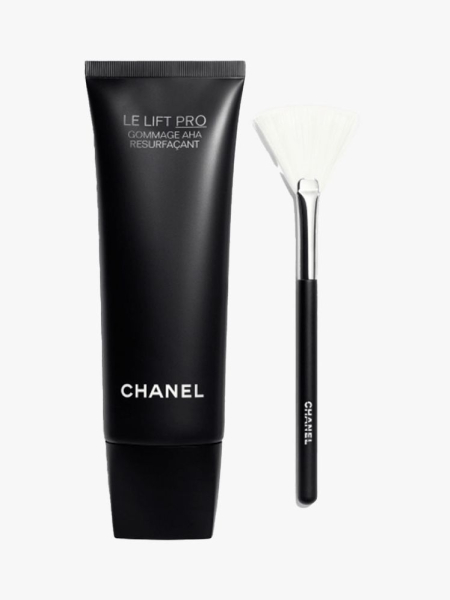
Chanel
Le Lift Pro Retexturizing AHA Peel
Nordstrom
Chanel
Why it's worth it: If you’re ready to splurge on a peel that feels as chic as it looks, meet the silky-smooth Chanel Le Lift Pro Retexturizing AHA Peel. Infused with glycolic acid, it’s designed with mature skin in mind—but anyone chasing that plump, bouncy glow will appreciate it. With its alpha hydroxy acids capped at 5%—that’s glycolic plus the gentler phytic acid—this formula is far less likely to irritate, even for sensitive skin. Still, everyone’s tolerance is different, so it’s smart to start slower than the label suggests (think once every other week) to see how your skin reacts before ramping up. Bonus: It comes with a fan brush for even application and a little spa-like moment at home.
Editor's tip
LargeChevron
Alongside the fine line-fighting duo of glycolic and phytic acids, the standout ingredient is honey sourced from Costa Rica. In Chanel’s formula, this honey acts as a natural enzyme that, when paired with AHAs, gently exfoliates and encourages skin renewal without abrasion.
More to know
LargeChevron
- Key ingredients: glycolic acid, phytic acid (5% total for both acids), glycerin, honey
- Who it’s for: people with a normal, oily, or mature skin type
- Fragrance-free: yes
Best Budget: The Ordinary AHA 30% + BHA 2% Peeling Solution
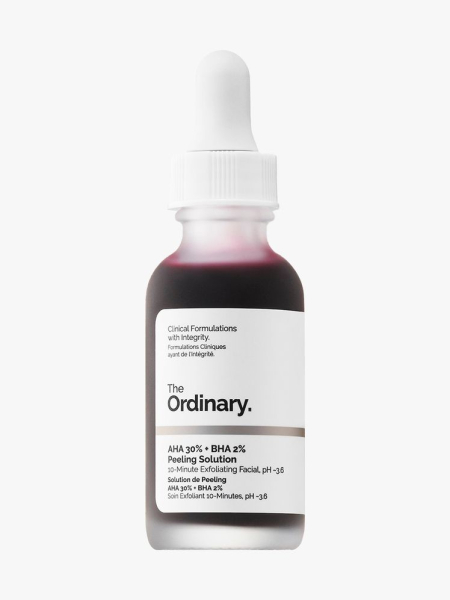
The Ordinary
AHA 30% + BHA 2% Peeling Solution
Amazon
Nordstrom
Ulta Beauty
Why it's worth it: Powerful formulas, plus budget-friendly prices? Of course, we had to include a fan-favorite from The Ordinary. Reddit and TikTok can’t stop singing this peel’s praises—fans say it helps fade stubborn scars and leaves a fresh, glassy glow thanks to its hefty 30% blend of exfoliating alpha hydroxy acids (glycolic, lactic, tartaric, and citric) plus 2% salicylic acid. But make no mistake, this stuff is potent, so follow the brand’s rules to a T: Leave it on no longer than 10 minutes, use it only once or twice a week (ideally at night), and steer clear of the delicate eye area.
Editor's tip
LargeChevron
This water-based solution puts blackheads, enlarged pores, and sebaceous filaments on blast. You can even spot-treat with it, focusing on trouble zones like your T-zone or jawline if that’s where congestion tends to crop up.
More to know
LargeChevron
- Key ingredients: glycolic acid, tartaric acid, salicylic acid, lactic acid, hyaluronic acid, vitamin B5
- Who it’s for: people with hyperpigmentation, acne, or uneven texture
- Fragrance-free: yes
Frequently Asked Questions
How do chemical peels work?
"Chemical face peels, a.k.a. exfoliating acid masks, work by penetrating the outer layers of the skin, breaking down the bonds between dead skin cells and stimulating the production of collagen and elastin," explains Shereene Idriss, MD, a board-certified dermatologist based in New York City. Most at-home treatments are not deep peels, but rather superficial, making them appropriate for everyday folks to use without the assistance of a dermatologist or esthetician.
"At-home chemical peels typically rely on AHAs (alpha hydroxy acids) like glycolic and lactic acid or a BHA (beta hydroxy acid) like salicylic acid to exfoliate the skin," says Mamina Turegano, MD, a board-certified dermatologist based in New Orleans. "More gentle peels will include fruit enzymes." She advises against the use of phenol peels at home, as they're very intense and should only be used for in-office treatments.
What ingredients should you look for in a chemical peel?
Not all exfoliating acids are created equal. After all, who among us has the same skin concerns? "When looking for an exfoliating acid product, it’s important to find the right one(s) for your skin type and needs," cautions Dr. Idriss. Here are some of our dermatologists' recommendations:
- Glycolic Acid: Helps stimulate collagen and reduce fine lines and wrinkles, and works well for dry skin
- Salicylic Acid: Unclogs your pores and regulates sebum production, making it ideal for anyone with oily, acne-prone skin
- Fruit Enzymes: Great for beginners and those with sensitive skin, as they're more gentle exfoliants
- Lactic Acid: Helps with brightening and treating keratosis pilaris
- Mandelic Acid: Ideal for deeper skin tones and those with sensitivity since it has a larger molecular size compared to other AHAs, and penetrates the skin more slowly and uniformly
- Polyhydroxy Acids (PHAs): Gluconolactone, lactobionic acid, and maltobionic acid are great for super sensitive skin as they are the most gentle group with the largest molecular size, per Dr. Idriss.
What does aftercare look like post-peel?
For a week leading up to a chemical peel, Dr. Turegano finds it helpful to use a gentle exfoliant so that your skin can better absorb the ingredients during the chemical peel. "I would also use ingredients to improve your skin's health, like vitamin C serums and peptide serums," she says.
Dr. Kim notes that after a peel, protecting your skin with a broad-spectrum SPF 30 (or higher) is essential."It's important to use sunscreen every day when you're going to use acids regularly, so your skin doesn't feel more sensitive to the sun," he says. "It's best to avoid the sun as much as possible the next day, and you should probably skip a peel before heading to the beach or on a sunny vacation." And while they're all the rage right now, he says you don't necessarily need specific barrier cream after your peel and that a regular moisturizer suffices. Dr. Turegano recommends a thicker moisturizer if you have one on hand, and also encourages the use of peptide or growth factor serums, but it's important to check your peel's box or label to make sure these serums won't interact with the peel you used.
All of our experts generally advise avoiding retinol, AHAs, BHAs, and physical exfoliants for a few days following the use of a chemical peel to avoid excess irritation. "This timeline can vary from person to person and is also dependent on the type of peel," notes Dr. Turegano.
Meet the experts
- Brendan Camp, MD, a board-certified dermatologist at MDCS Dermatology: Medical Dermatology & Cosmetic Surgery, based in New York City
- Mona Gohara, MD, a board-certified dermatologist based in Hamden, Connecticut
- Shereene Idriss, MD, a board-certified dermatologist and founder of Dr. Idriss Skincare, based in New York City
- David Kim, MD, a board-certified dermatologist at New York Dermatology Group, based in New York City
- Ruth McTighe, MD, a board-certified dermatologist of Waccamaw Dermatology based in Mt. Pleasant, South Carolina
- Mamina Turegano, MD, a board-certified dermatologist based in New Orleans
- Heather Woolery-Lloyd, MD, a board-certified dermatologist based in Miami
How we test and review products
When Allure tests a product, our editors look at it from every angle in an effort to best serve you. We review ingredients, scrutinize brand claims, and, when necessary, examine peer-reviewed scientific and medical studies. In addition to testing each and every product that's included in each and every review, we rely on experts who shape their fields, including dermatology, cosmetic chemistry, and medicine, to help us vet the ingredients and formulas.
For our list of the best at-home peels, we considered each product's performance across five primary categories: product ingredients and efficacy, packaging, fragrance, texture, and product wear. Every product was determined to have excelled in each category by our editorial team, which is composed of in-house writers and editors as well as contributors—along with special consideration from board-certified dermatologists. To learn more information on our reporting and testing processes, read our complete reviews process and methodology page.
Our staff and testers
A beauty product is a personal purchase. You might be searching for a face cream to address persistent dryness or a new nail product to add to your Sunday self-care routine; you may simply be browsing around for the latest launches to hit the hair market. No matter what you seek or your individual needs and concerns, Allure wants to ensure that you love anything we recommend in our stories. We believe that having a diverse team of writers and editors—in addition to the wide range of outside testers and industry experts we regularly call upon—is essential to reaching that goal.
After all, can we really say a skin-care product is the "best" for people over 50 if the only testers we've solicited opinions from folks who have yet to hit 30? Can we honestly deem a high-end diffuser worthy of your hard-earned cash if it’s never been tested on curls? We’re proud that our staff spans a wide range of ages, skin tones, hair textures, genders, and backgrounds, which means that we are able to fairly assess any beauty product that comes into the beauty closet.
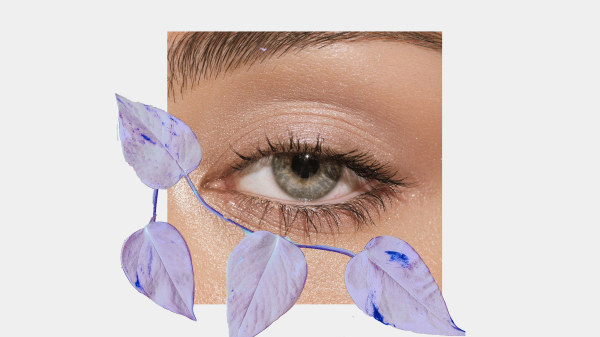
Periorbital Veins Are The Sign of Eye Aging I Didn’t See Coming
 Adobe StockSave this storySave this story
Adobe StockSave this storySave this story
I’m so vain… that this whole story is about me. My veins, that is. For the past several years I’ve been increasingly bothered by the very-visible veins near my eyelids: two large, dark, webs that sit above my lids—right near my brow bones—on both sides. Once I hit my mid-30s and the skin around my eyes grew thinner, it got to a point where I felt I needed heavy concealer to hide them.
I had decided to live with them—and resign myself to a lifetime of using concealer—until it occurred to me, a beauty writer, that surely there was a way to treat these highly-visible veins with one of the array of lasers, peels, or products currently on the market. The good news is that I was right: they’re treatable. The bad news: sometimes they can return after treatment. In any case, I also learned there’s a name for them: periorbital veins.
Whether yours are visible or not (perhaps one day they might be, younger readers), is strictly a cosmetic issue. Since having mine zapped, I’ve felt a sense of renewed confidence: My eyes appear lifted and more awake.
Courtesy of subject
First of all, what exactly are periorbital veins?
Periorbital is the technical name for the area around the eye socket. Periorbital veins—or periorbital reticular veins as they’re medically referred to—are “are a network of superficial veins that surround the eyes,” explains Pooja Rambhia, MD, a board-certified dermatologist in New York City. It’s completely normal—in fact, healthy—to have these veins; it’s their job to “bring deoxygenated blood away from the cells and then back, ultimately, to the heart,” says Daniel Belkin, MD, a New York City-based board-certified dermatologist.
Though we have reticular veins all over our bodies—you’ve probably seen them on your legs before—they’re more noticeable on the face, especially around the eyes, because the skin in that area is so delicate and thin. “While they’re anatomically small to moderate, reticular veins can appear prominent and cosmetically concerning in individuals with thin skin or minimal subcutaneous fat in the periorbital region,” says Dr. Rambhia. “As we age, we lose subcutaneous fat [in that area], which normally provides cushioning that helps to camouflage these vessels.”
Dr. Belkin explains that it’s possible to have visible periorbital veins on your upper eye area, as I do, but “most people have them on the lower lateral orbit, more on the under eye area, which is why a lot of people will find that they enhance the appearance of their dark circles.”
Whether or not yours appear—and where—can also depend on your skin tone (those with darker skin may not notice their periorbital veins becoming more prominent until much later in life, if at all) and unique underlying vascular anatomy. “In some cases, periorbital reticular veins may appear as subtle shadowing, while in others they present as distinct linear markings,” says Dr. Rambhia.
Another factor: chronic sun exposure, “which contributes by accelerating collagen breakdown and skin thinning, making periorbital veins appear more prominent,” says Dr. Rambhia. Hormones, untreated allergies (and in turn, frequent eye rubbing), smoking, drinking, and poor sleep can all play a role as well, she adds.
Though there are also certain medical conditions that can contribute to the visibility of periorbital veins—including thyroid disorders that impact circulation, and sleep disorders leading to fluid retention—it’s very rare that they indicate an underlying health concern, says Dr. Rambhia. But if prominent periorbital veins seem to appear overnight “accompanied by swelling, pain, or vision changes” you should seek medical attention immediately, she says.
Periorbital veins aren’t the only aesthetically pesky vessels on the face. “You can have what we call telangiectasias, which are little, tiny, visible red veins often around the nose or cheek,” says Dr. Belkin. “We also see what we call diffuse erythema, which is kind of like flushing that often happens in areas where people get rosacea, such as the middle cheek, nose, and sometimes between the brows and chin.”
You can also have reticular veins on the forehead. “That’s the one that people hate, the central vein on their forehead,” says Dr. Belkin. But unlike the aforementioned others, “that’s a functional vein that you need” and therefore it cannot be removed, he says. (Though strategic placement of neurotoxin can soften the muscle on the forehead and make the vein less visible.)
Can you make periorbital veins look less prominent?
As we’ve established, veins are vitally important to the health and function of our bodies. But we don’t need all of them to keep our blood flowing: When one vein closes, the blood reroutes to another one nearby, says Dr. Belkin.
Most Popular
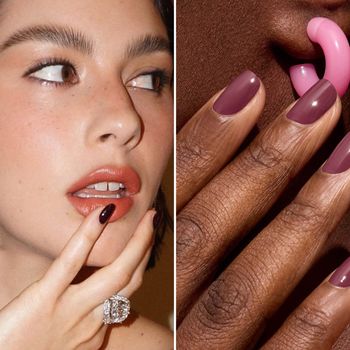 NailsThe 6 Fall Nail Color Trends You Need to Know About
NailsThe 6 Fall Nail Color Trends You Need to Know About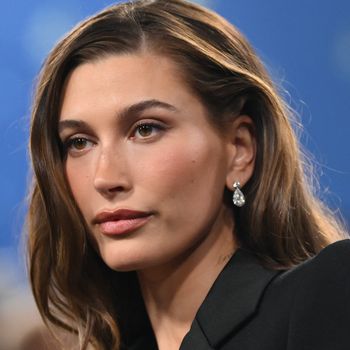 NailsHailey Bieber's New Faded French Manicure Is Destined to Be a Huge Trend
NailsHailey Bieber's New Faded French Manicure Is Destined to Be a Huge Trend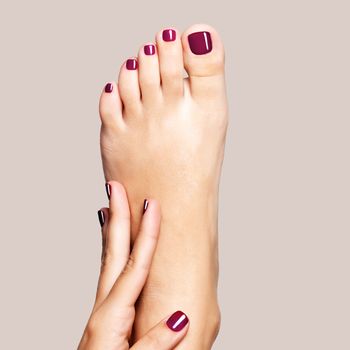 Nails9 Cozy Fall Pedicure Colors to Wiggle Your Toes In
Nails9 Cozy Fall Pedicure Colors to Wiggle Your Toes In
The most common and safest option for treatment is a laser, he says, specifically a long-pulsed Nd:YAG laser. This type of laser uses a 1064 nanometer wavelength light that penetrates deeper into the skin to target blood vessels while minimizing damage to any surrounding tissues. A laser at this wavelength, Dr. Belkin says, can target hemoglobin, a protein that gives blood its red color. “The longer the wavelength, the deeper into the skin it goes,” he says. “And because veins are under the dermis and in the fat layer, [that’s what you want in this case].” The laser heats up the blood in the vein until it bursts and is eventually absorbed by the body, says Dr. Rambhia.
Depending upon individual anatomy, you may need two to four treatments spaced four to six weeks apart to minimize or completely erase the appearance of your veins. (The average cost is about $1,500 per session, which will vary based on geographic location and provider.) “Patients may experience mild swelling and temporary darkening of treated vessels before they fade,” says Dr. Rambhia.
Despite the safety of the laser treatment, not all reticular veins on the face are created equal—and some, like temple and forehead veins, may retaliate if you attempt to remove them. That’s because when you remove a vein, your body makes new ones, explains Dr. Belkin. “During my fellowship training, we did not touch reticular veins in the temples; my mentor noticed that when he was treating temple veins, people would get veins popping up elsewhere, like their cheeks,” says Dr. Belkin. “At the end of the day you do need some veins and when you get rid of some, you may get others. Which is why I don’t like to treat temple veins. However, the reticular veins around the eye are suitable to treat because they’re small, and you just don’t need them as much.”
Another, less commonly-used (for good reason) option is sclerotherapy, which involves injecting sclerosin, a chemical solution, into the vein, which in turn causes it to close off and collapse. “That’s what we inject to treat spider and varicose veins in the legs, but the problem with using it on the face is that the veins in the face connect with the veins in the brain,” says Dr. Belkin. “So if you were to propagate a clot from doing sclerotherapy, you could cause a clot to enter the sinus of the brain, which would be a huge problem.”
Most Popular
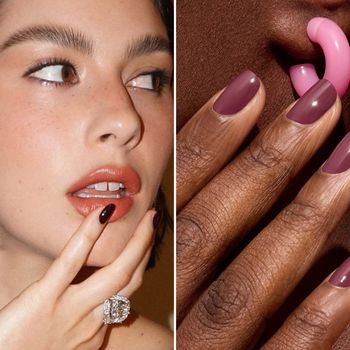 NailsThe 6 Fall Nail Color Trends You Need to Know About
NailsThe 6 Fall Nail Color Trends You Need to Know About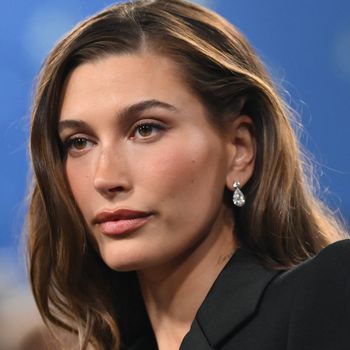 NailsHailey Bieber's New Faded French Manicure Is Destined to Be a Huge Trend
NailsHailey Bieber's New Faded French Manicure Is Destined to Be a Huge Trend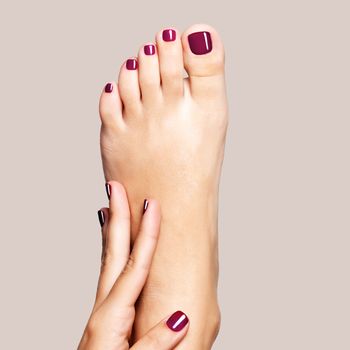 Nails9 Cozy Fall Pedicure Colors to Wiggle Your Toes In
Nails9 Cozy Fall Pedicure Colors to Wiggle Your Toes In
The most invasive means of getting rid of periorbital veins is surgery. Surgical removal of veins is called microphlebectomy and requires removing the vein through a tiny incision to “ligate the vein or tie it off,” says Dr. Belkin. It carries a high risk of scarring, infection, and potential damage to surrounding structures of the delicate eye area, says Dr. Rambhia.
Another option: dermal fillers, which may be used to address hollowing and thicken the skin, therefore minimizing the visibility of veins. Topical treatments like retinol may also be recommended to help build collagen and improve skin thickness over time as part of a multi-pronged treatment approach.
Tracy Evans, MD, a board-certified dermatologist in San Francisco, uses hyaluronic acid-based filler “to add a layer of thickness to the thin tissue underneath the eyes to camouflage the veins.” She also injects platelet-rich fibrin (PRF), derived from patients’ own blood, to help support tissue rejuvenation—which in turn adds more softness underneath the eyes so that veins cannot be seen.
My experience with periorbital vein removal
After months of daily poking, prodding, and lifting my brows in the mirror, I was ready to have the prominent purple veins on my brow bone treated, opting for laser removal with Dr. Belkin, who performed the treatment gratis for me as a member of the media. While I had been dreaming about the results, I was still nervous about a powerful laser being that close to my eyes, and having to wear metal ocular eyeshields on my eyeballs. But I knew I was in good hands with Dr. Belkin. He explained how important it was for me to wear these shields because of the wavelength of the laser and the depths it can travel.
Dr. Belkin numbed my eyeballs using tetracaine eye drops, which would allow him to place the metal ocular shields (coated with lubricant) into my eyes. Before he began, I wiped my eyes with a cotton pad soaked in micellar water to make sure the area was completely clear of makeup and mascara to prevent anything from scratching my eye. Afterwards, he placed the numbing drops in both my eyes, which worked almost immediately. Having your eyes numbed is a very weird, almost inexplicable feeling. I didn’t fully grasp the sensation or lack thereof until he placed the metal ocular shields over my eyes—it was only then that I realized that I didn’t feel a thing.
Most Popular
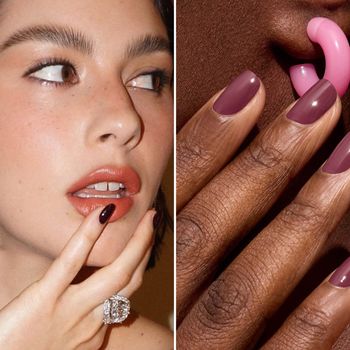 NailsThe 6 Fall Nail Color Trends You Need to Know About
NailsThe 6 Fall Nail Color Trends You Need to Know About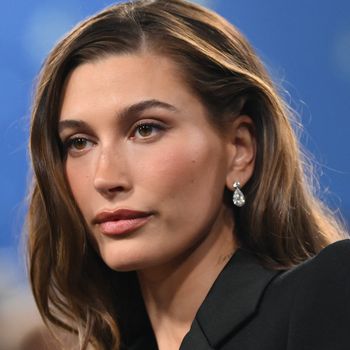 NailsHailey Bieber's New Faded French Manicure Is Destined to Be a Huge Trend
NailsHailey Bieber's New Faded French Manicure Is Destined to Be a Huge Trend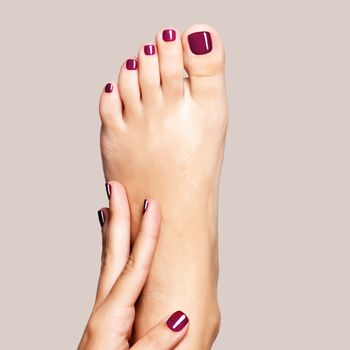 Nails9 Cozy Fall Pedicure Colors to Wiggle Your Toes In
Nails9 Cozy Fall Pedicure Colors to Wiggle Your Toes In
Then, Dr. Belkin turned to the Excel V laser. Starting with my right eye, Dr. Belkin applied a gel and used an attachment on the laser that helps to cool the skin; this was used to both protect my skin and help the laser to glide more easily. As he began to fire the laser, it felt like a heated rubber band snapping against my brow bone. I’m not going to sugar coat this, it was painful—I needed to take a breather once or twice. Because he was using a near infrared laser, which is heat-based, he could only do one pass at time. “You can only do it once, so if the setting is not quite right, you have to wait until the next time because if you double pulse it or hit it twice, you risk heating the skin too much and causing an ulceration,” he told me.
What is weirdly cool about the treatment is that as you fire the laser, it heats up the blood and the doctor can actually see the vein being destroyed. “You can see the vein fry. You can see it coagulate under the skin and turn gray,” he said. He finished the pass with the laser and repeated the same thing on my left side. Despite the discomfort, the treatment itself was very quick, taking less than five minutes.
Once he removed the ocular shields, I had to rinse my eyes because they were blurry from the lubricant. My eyes went back to normal after about two hours and my upper eyelids were only slightly red and swollen after the laser. I could immediately see a difference in the appearance of the veins: They looked smaller and much less pronounced. I was already happy, but told me we’d know if the treatment was successful after four weeks—and if not, we’d do it again.
My periorbital vein removal results
I ultimately went through the treatment twice, spaced about four weeks apart. Though the first treatment was successful for the large vein on my right brow bone, the one on the left stood its ground and was not giving up so easily. It was a little bit smaller than before but must have reestablished a little bit of a flow, as Dr. Belkin described it.
Today, my periorbital veins are still not completely gone—but the difference is significant. My eyes look more refreshed, even-toned, and brighter. Dr. Belkin cautioned that the treated veins could come back to some extent or my body could be agreeable and they would be gone for good. “Treated veins themselves typically do not return once successfully closed by laser therapy. However, new veins can develop in the same area over time due to the body's natural ability to form collateral circulation and new blood vessels,” says Dr. Rambhia.
And while I’m not eager to put on those ocular shields again any time soon, “many patients benefit from periodic maintenance treatments to address new vessel formation before it becomes cosmetically bothersome,” says Dr. Rambhia. For now, I’m going to enjoy the results I did get—and keep my concealer nearby, just in case.
